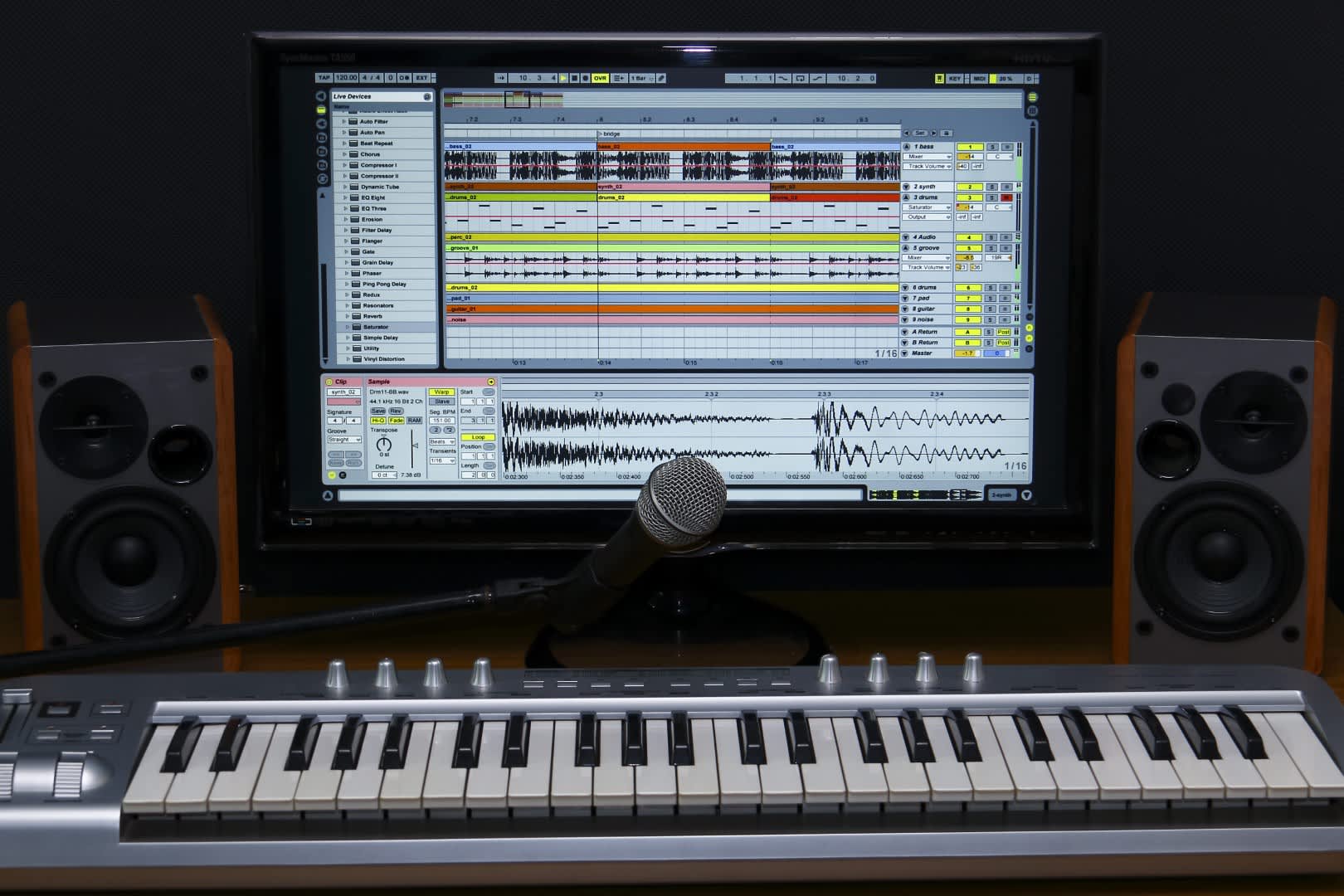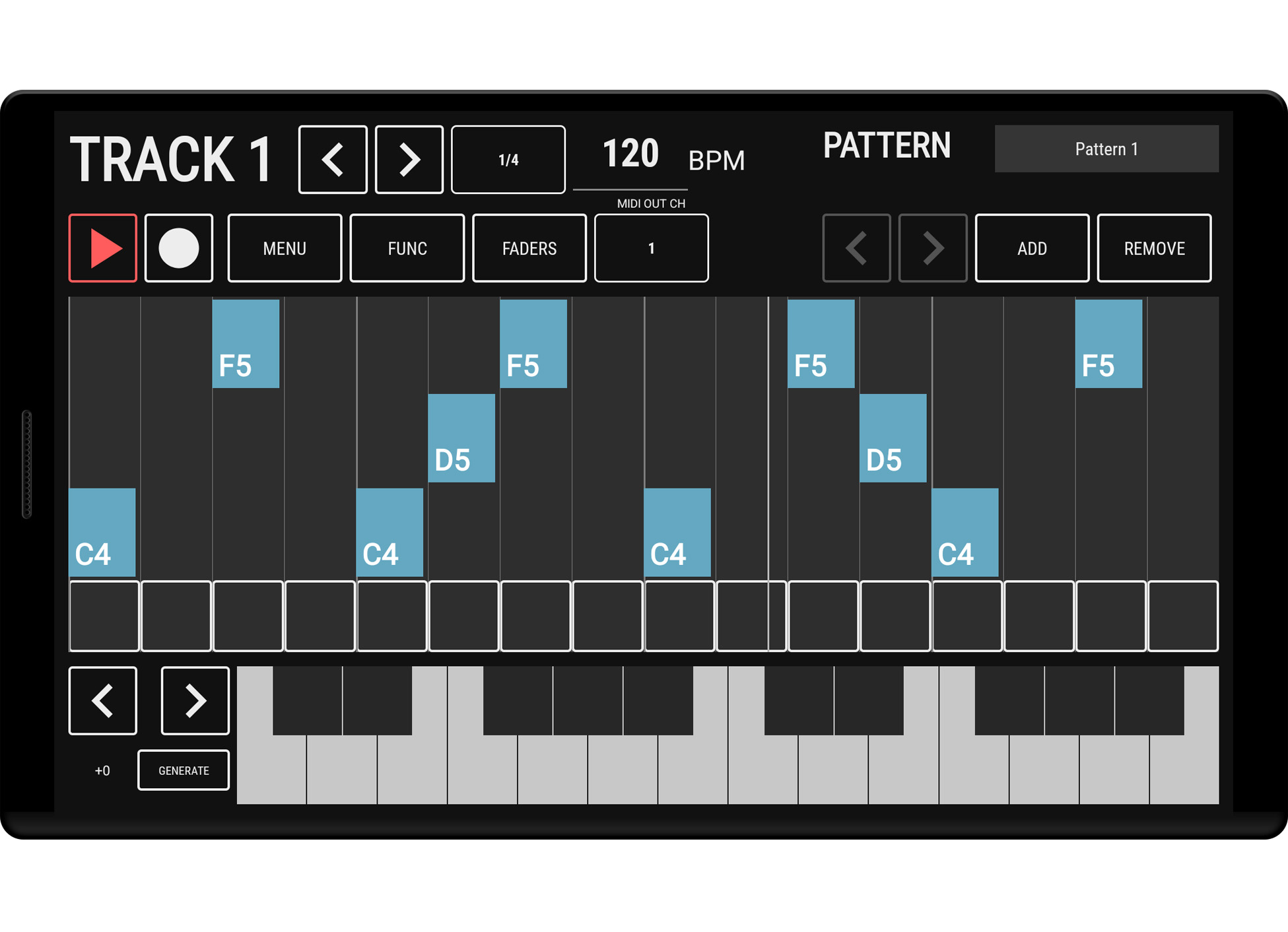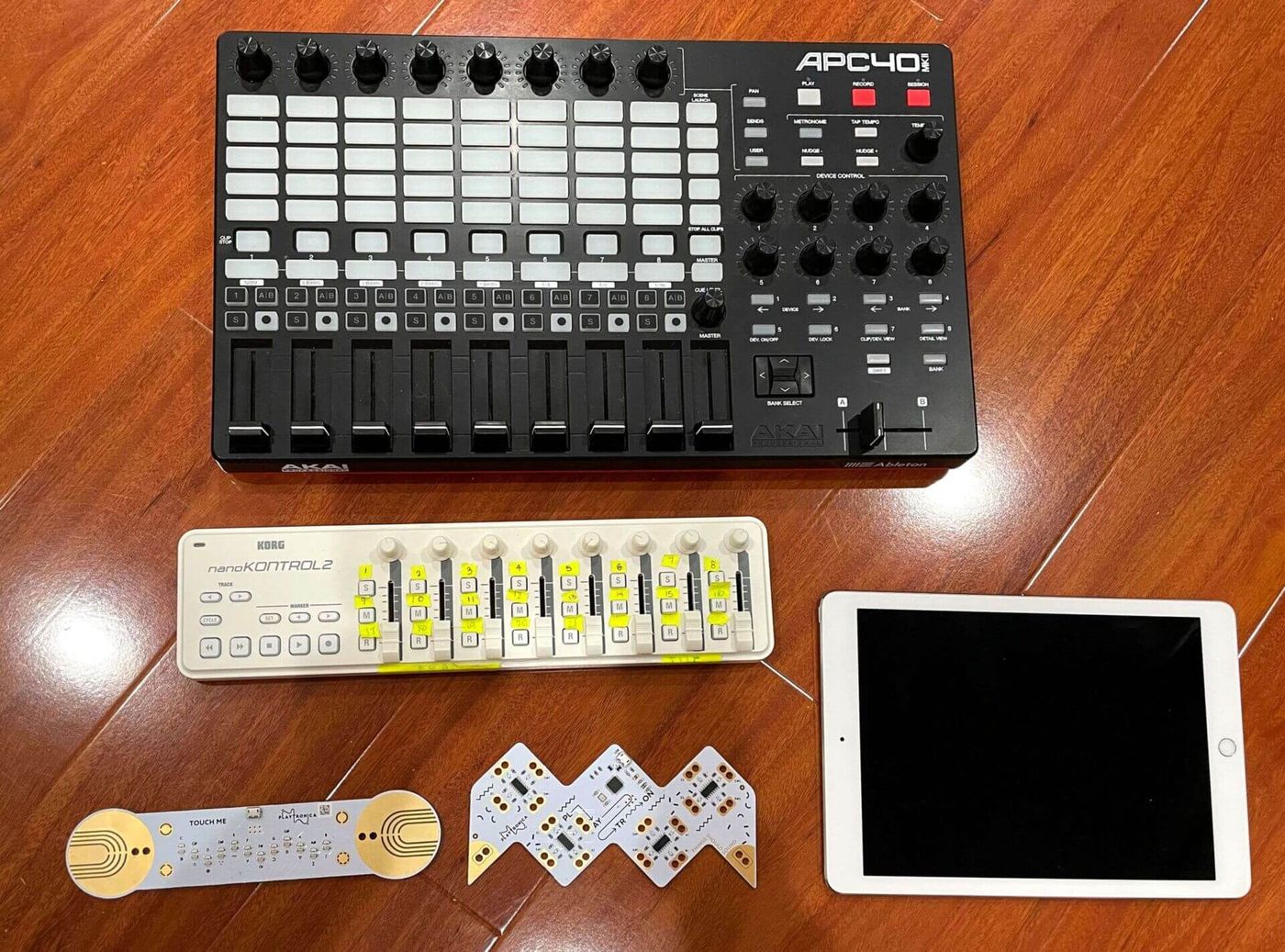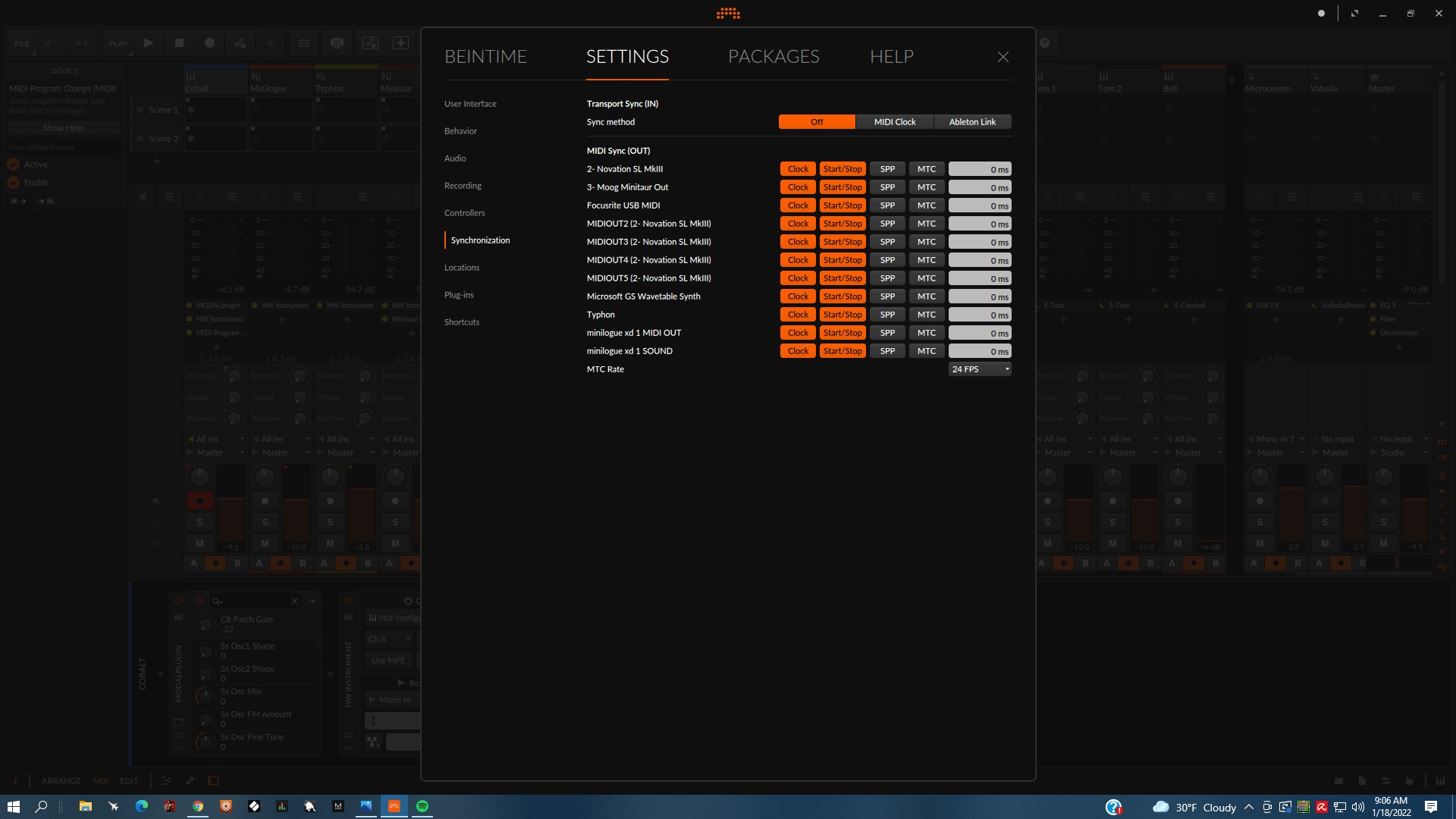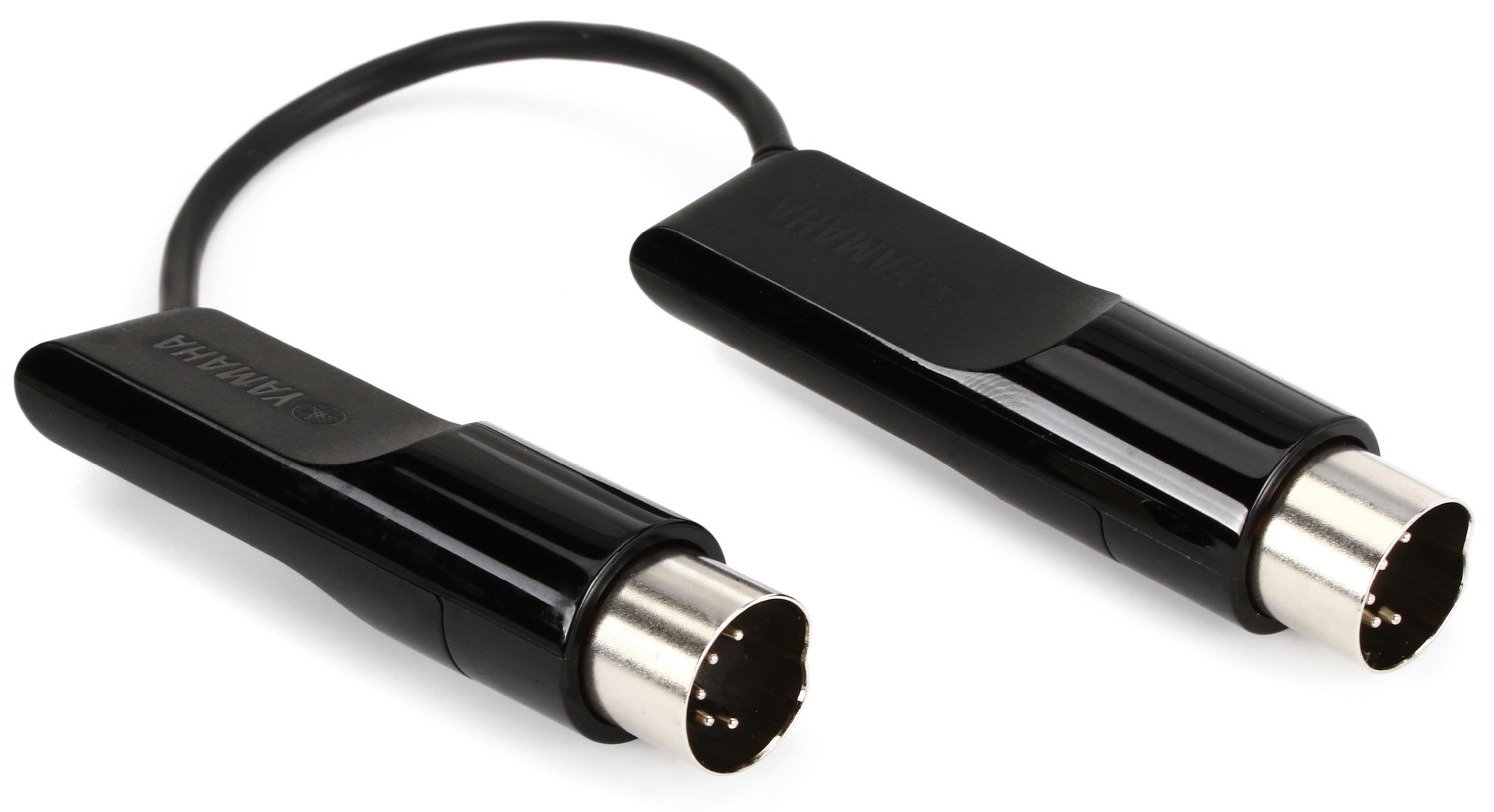Home>Production & Technology>MIDI>What Is A MIDI Message


MIDI
What Is A MIDI Message
Published: February 22, 2024
Learn about MIDI messages and their significance in digital music production. Understand how MIDI facilitates communication between musical instruments and devices.
(Many of the links in this article redirect to a specific reviewed product. Your purchase of these products through affiliate links helps to generate commission for AudioLover.com, at no extra cost. Learn more)
Table of Contents
Introduction
MIDI, which stands for Musical Instrument Digital Interface, has revolutionized the way music is created, recorded, and played. At its core, MIDI is a versatile communication protocol that allows electronic musical instruments, computers, and other related devices to connect and share musical information. This digital language has become the backbone of modern music production, enabling seamless integration between various hardware and software components.
The concept of MIDI was first introduced in the early 1980s, and since then, it has become an indispensable tool for musicians, producers, and audio engineers. Unlike audio signals, MIDI does not transmit actual sound; rather, it carries data that represents musical notes, control signals, and other parameters. This distinction is crucial as it allows for flexibility and manipulation of musical elements without degrading the original audio quality.
Understanding MIDI messages is fundamental to comprehending the intricacies of MIDI communication. These messages serve as the means through which MIDI-enabled devices exchange information, enabling them to synchronize and interact seamlessly. Whether it's transmitting note-on and note-off commands, control changes, or system-exclusive data, MIDI messages form the foundation of electronic music production and performance.
In this article, we will delve into the world of MIDI messages, exploring their types, parameters, and significance in the realm of music technology. By gaining insight into the inner workings of MIDI messages, you will develop a deeper appreciation for the remarkable capabilities of MIDI and its profound impact on the music industry.
Understanding MIDI Messages
MIDI messages serve as the digital language through which MIDI-enabled devices communicate and exchange musical information. These messages are the building blocks of MIDI communication, facilitating the seamless transfer of musical data between various hardware and software components. Understanding the intricacies of MIDI messages is essential for anyone involved in music production, performance, or audio engineering.
At its core, a MIDI message consists of a series of digital instructions that convey specific musical actions or parameters. These instructions are transmitted in real-time, allowing for instantaneous control and manipulation of musical elements. Unlike traditional audio signals, which carry sound waves, MIDI messages transmit data that represent musical notes, control changes, and other performance-related information.
One of the key attributes of MIDI messages is their versatility. They can convey a wide range of musical events and parameters, including note-on and note-off commands, pitch bend information, modulation control, sustain pedal data, and more. This flexibility enables musicians and producers to express their musical ideas with precision and nuance, shaping the dynamics and expression of the music in real time.
Furthermore, MIDI messages are not limited to transmitting musical events; they also facilitate the exchange of system-related information. This includes synchronization signals, timecode data, and system-exclusive messages that allow for seamless integration between different MIDI devices and software applications.
In addition to their real-time capabilities, MIDI messages are also highly efficient in terms of data transmission. Due to their digital nature, MIDI messages can be transmitted and processed with minimal latency, ensuring a responsive and dynamic musical performance. This efficiency has made MIDI the standard protocol for electronic musical instruments, recording equipment, and music production software.
In essence, understanding MIDI messages is akin to mastering a universal musical language. It empowers musicians and producers to communicate with a diverse array of musical devices and software, unlocking endless creative possibilities. By harnessing the power of MIDI messages, artists can breathe life into their musical compositions, infusing them with expression, emotion, and depth.
As we continue to explore the world of MIDI messages, we will uncover the various types of MIDI messages and their specific parameters, shedding light on the inner workings of this transformative musical technology.
Types of MIDI Messages
MIDI messages encompass a diverse array of data types that facilitate the communication and control of musical elements between MIDI-enabled devices. Each type of MIDI message serves a specific purpose, allowing for the transmission of various musical events and parameters. Understanding the different types of MIDI messages is essential for harnessing the full potential of MIDI technology and leveraging its capabilities in music production, performance, and recording.
1. Note Messages
Note messages are fundamental to MIDI communication, representing the initiation and cessation of musical notes. These messages include "note-on" commands, which indicate the start of a note with specific pitch and velocity, and "note-off" commands, signaling the end of a note. By transmitting note messages, MIDI devices can accurately reproduce musical performances, capturing the nuances of timing, dynamics, and articulation.
2. Control Change Messages
Control change messages enable the manipulation of various parameters within MIDI devices, such as adjusting volume, modifying instrument timbre, and controlling effects parameters. These messages provide a versatile means of shaping the sonic characteristics of musical performances, allowing for real-time adjustments and expressive control over sound synthesis and processing.
3. Program Change Messages
Program change messages are used to switch between different instrument sounds or presets within MIDI devices. By sending program change commands, musicians and producers can seamlessly transition between distinct timbres and sonic textures, expanding the creative palette and enhancing the musical expression of their compositions.
4. Pitch Bend Messages
Pitch bend messages facilitate the modulation of pitch within MIDI instruments, enabling fluid and expressive pitch variations. By transmitting pitch bend data, musicians can infuse their performances with subtle pitch fluctuations, vibrato effects, and dynamic tonal shifts, adding a layer of emotive expression to their musical interpretations.
5. System Messages
System messages encompass a range of MIDI data that pertains to system synchronization, timing information, and device-specific communication. These messages include timing clock signals, start/stop commands, and system-exclusive data, allowing for seamless integration and synchronization between MIDI devices and software applications.
6. Channel Pressure and Polyphonic Key Pressure Messages
Channel pressure and polyphonic key pressure messages convey the pressure or force applied to a MIDI controller or keyboard after a note has been initiated. These messages enable performers to introduce expressive variations in volume, timbre, and modulation, adding depth and nuance to their musical phrasing.
By understanding the distinct characteristics and functionalities of each type of MIDI message, musicians, producers, and audio engineers can harness the full potential of MIDI technology, unlocking a world of creative possibilities and musical expression. Whether it's shaping the dynamics of a performance, sculpting intricate sound textures, or seamlessly transitioning between instrument sounds, MIDI messages form the backbone of modern music production and performance, empowering artists to realize their musical visions with precision and artistry.
Common MIDI Message Parameters
MIDI messages consist of various parameters that define and control the musical information being transmitted between MIDI-enabled devices. These parameters play a crucial role in shaping the dynamics, expression, and sonic characteristics of musical performances, providing a versatile toolkit for musicians, producers, and audio engineers to craft their artistic visions.
1. Channel Number
The channel number parameter specifies the MIDI channel through which the message is transmitted. MIDI channels serve as virtual pathways for communication between devices, allowing for the independent control of multiple MIDI instruments and sound sources. By assigning specific messages to different channels, musicians can orchestrate complex arrangements and control diverse sonic elements within their compositions.
2. Note Number
The note number parameter corresponds to the pitch of a musical note being triggered or manipulated. Each note on the MIDI keyboard is assigned a unique numerical value, allowing for precise control over the pitch and musical intervals within a composition. By manipulating note numbers, musicians can create melodic sequences, chord progressions, and intricate musical phrases with accuracy and finesse.
3. Velocity
Velocity represents the force or intensity with which a note is played or triggered. This parameter influences the volume and dynamic response of a note, allowing for expressive variations in the articulation and impact of musical performances. By adjusting velocity values, musicians can imbue their compositions with nuanced dynamics, from delicate whispers to powerful crescendos, enhancing the emotional depth and realism of their musical expressions.
4. Control Change Number
Control change messages are accompanied by a control change number parameter, which specifies the type of control being manipulated. This parameter allows for the precise adjustment of various musical parameters, such as volume, modulation, panning, and effect parameters. By assigning control change numbers to specific functions, musicians can shape the timbral characteristics and sonic textures of their compositions with precision and creativity.
5. Data Value
The data value parameter corresponds to the specific value or parameter setting being transmitted within a MIDI message. This parameter provides fine-grained control over musical elements, allowing for real-time adjustments and modulation of sound parameters. Whether it's modifying filter cutoff frequencies, adjusting envelope settings, or manipulating effect parameters, data values enable musicians to sculpt and refine the sonic nuances of their compositions.
6. Program Number
The program number parameter is associated with program change messages and determines the specific instrument sound or preset being selected within a MIDI device. By assigning program numbers to different instrument sounds, musicians can seamlessly transition between diverse timbres and sonic textures, enhancing the expressive palette and sonic versatility of their musical performances.
By mastering these common MIDI message parameters, musicians and producers can harness the full potential of MIDI technology, shaping their musical compositions with precision, expression, and creativity. These parameters form the building blocks of MIDI communication, empowering artists to craft immersive and emotive musical experiences with unparalleled control and artistry.
Conclusion
In conclusion, the realm of MIDI messages represents a rich tapestry of digital communication, enabling musicians, producers, and audio engineers to sculpt and shape musical performances with unparalleled precision and artistry. By delving into the intricacies of MIDI messages, we have unveiled the foundational elements that underpin the seamless exchange of musical data within the MIDI ecosystem.
From note messages that capture the essence of musical articulation to control change messages that shape the sonic landscape, each type of MIDI message serves as a building block for creative expression and musical innovation. The versatility and efficiency of MIDI messages empower artists to breathe life into their compositions, infusing them with emotion, dynamics, and depth.
Furthermore, the common MIDI message parameters provide a nuanced toolkit for controlling and manipulating musical elements, from pitch and velocity to timbral characteristics and sonic textures. These parameters serve as the canvas upon which artists paint their musical visions, allowing for expressive nuances, dynamic variations, and sonic explorations.
As we reflect on the profound impact of MIDI messages, it becomes evident that they are not merely technical components but rather conduits of artistic expression and creativity. The ability to communicate, control, and shape musical information in real time has revolutionized the music industry, ushering in an era of boundless possibilities and sonic exploration.
In the ever-evolving landscape of music technology, MIDI messages stand as a testament to the enduring power of innovation and collaboration. They bridge the gap between musical instruments, recording equipment, and software applications, fostering a seamless ecosystem where ideas flow freely and creativity knows no bounds.
In essence, MIDI messages embody the essence of musical communication, transcending the confines of traditional audio signals and embracing the digital frontier with unwavering adaptability and ingenuity. They are the invisible threads that weave together the fabric of modern music production, performance, and recording, empowering artists to realize their musical visions with precision and artistry.
As we embark on the next chapter of music technology, MIDI messages will continue to serve as the cornerstone of creative expression, fostering a harmonious synergy between human ingenuity and digital innovation. With each note, each control change, and each parameter adjustment, MIDI messages illuminate the path toward musical excellence and artistic fulfillment.
In the symphony of modern music creation, MIDI messages resonate as the silent conductors, orchestrating a symphony of creativity and boundless potential. Their impact reverberates through the corridors of music studios, concert halls, and digital workspaces, shaping the sonic landscape and inspiring generations of artists to push the boundaries of musical expression.
Ultimately, MIDI messages are not just data; they are the embodiment of musical possibility, the catalysts for transformative experiences, and the conduits through which artists breathe life into their creative visions. As we celebrate the enduring legacy of MIDI messages, we embrace a future where innovation, collaboration, and artistic expression converge to redefine the very essence of music itself.

